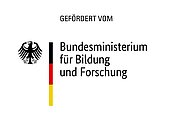Klimapakt2030plus: EMN-SIM - Simulation tool for representing and visualizing energy flows in the European metropolitan region of Nuremberg in the context of the turnaround in energy policy








| Partner |
Europäische Metropolregion Nürnberg |
| Researcher | Prof. Dr. Marco Pruckner Paul Benz M.Sc. |
| Funded period | Dec. 2022 - Nov. 2027 |
| Funder | Bundesministerium für Bildung und Forschung (BMBF), Forschung für Nachhaltigkeit (FONA) |
Project Description

As a sub-project of the Klimapakt2030plus of the European Metropolitan Region of Nuremberg (EMN), EMN_SIM simulatively mirrors the development of energy flows in the metropolitan region in the form of electricity, gas and heat. The overarching goal in Klimapakt2030plus is to systematically investigate what role metropolitan regions in general can play in implementing the energy transition and the Paris climate goals. One outcome of EMN_SIM will be the prototype of a simulation model that can be used to visualize typical scenarios of the energy transition of the EMN at the municipal level and to analyze their effects and opportunities on and for the economic system. This model will be made accessible via a user interface, which will allow the implementation of the climate goals to be co-designed and, in addition, through consultation and education of the entire population, to create a better general understanding and a higher level of acceptance for measures in the course of the energy transition and the achievement of the climate goals.
For further information visit Klimapakt2030plus
Our contribution to the project: Transport Modelling
A crucial part of the energy transition is the electrification of the transport sector, which is the focus of our lab in the EMN_SIM project. In order to model mobility behavior in the metropolitan region, a mobility model based on the methods of activity-based modeling and a solid database (Mobilität in Deutschland, Pendleratlas, etc.) is developed. Therefore, we can determine individual mobility and commuter behavior in the metropolitan region. Based on different assumptions, such as the degree of electrification of private cars or public bus fleets, in combination with consumption models and several charging strategies, it is possible to determine local electrical charging loads as well as flexibility potentials. Finally, a contribution to decision-making in the area of the transport transition in the metropolitan region.




